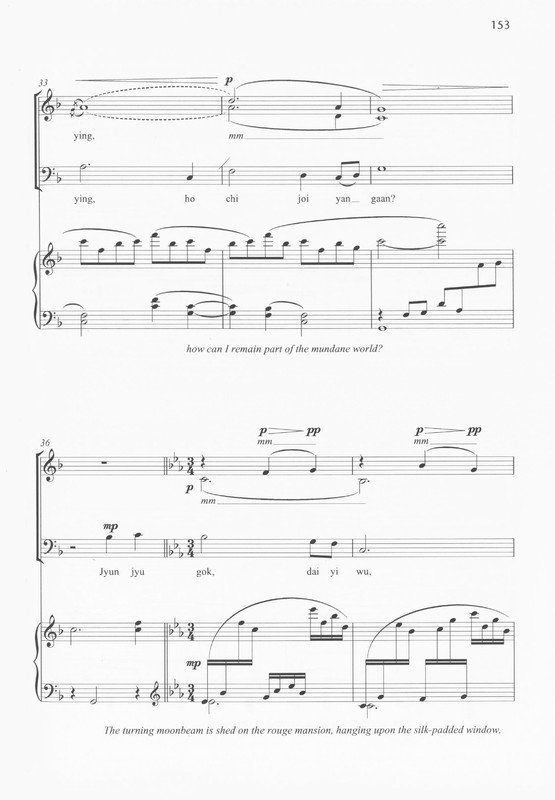Seui Diu Go Tau (Under the Mid-Autumn Moon)
Item
-
Score title
-
Seui Diu Go Tau (Under the Mid-Autumn Moon)
-
Composer
-
Kai-Young Chan
-
Program note
-
This piece was conceived in Philadelphia at the time of the Chinese Mid-Autumn festival, which takes place every year on the fifteenth day of the eighth month of the lunar calendar. The full moon is a symbol of reunion and thoughts for families and friends in Chinese culture because "full" and "reunion" share the same written character. The custom of celebrating with family and friends dates back to at least a thousand years ago, and the moon has thus become a recurring theme in classical Chinese literature.
The tonal nature of spoken Cantonese creates a closer relationship between recitation and singing than exists in Western languages. Cantonese is the local dialect of Hong Kong and one of the oldest dialects in China. Whereas Mandarin has four main tones, Cantonese has nine tones at various registers. Hong Kong secular choral works have usually been written for performance in Mandarin, while Cantonese has generally been more limited to sacred works. Like most Hong Kong students, Chan Kai-Young learned to recite "Seui Diu Go Tau" in Cantonese during his school years, and in this choral setting he closely allies the melody of the different poem phrases with the Cantonese inflections as it might be recited.
 Kai-Young Chan
Kai-Young Chan

